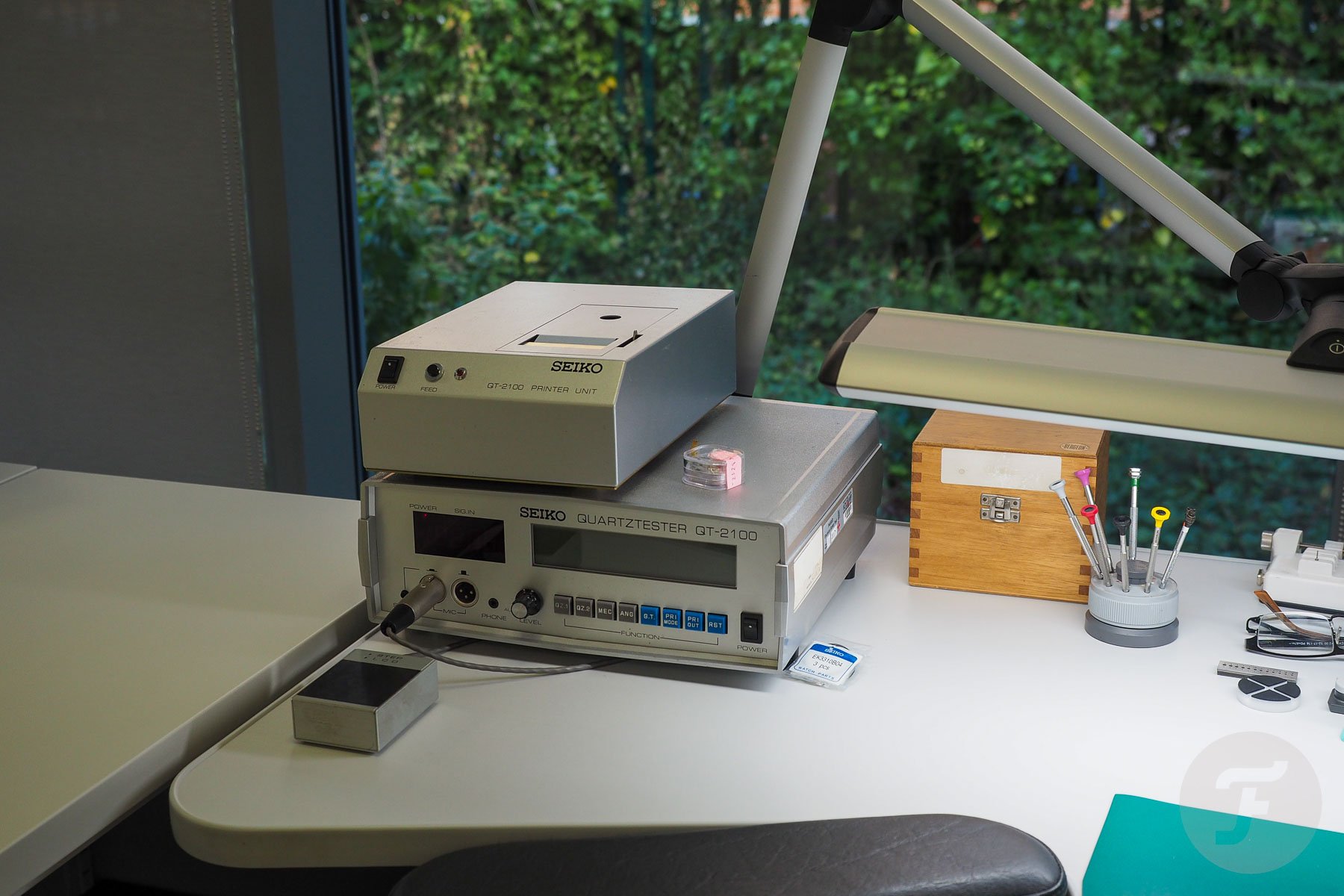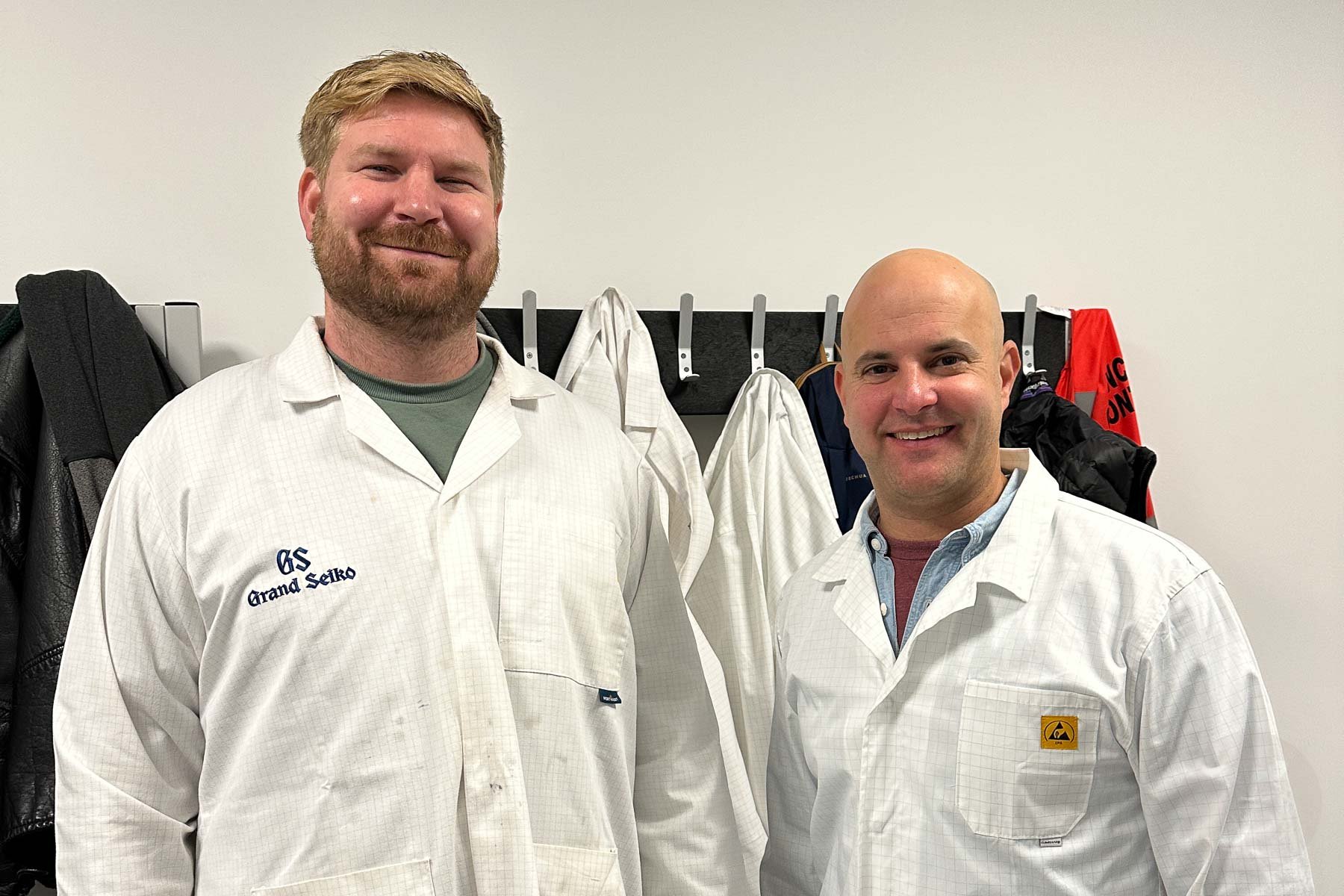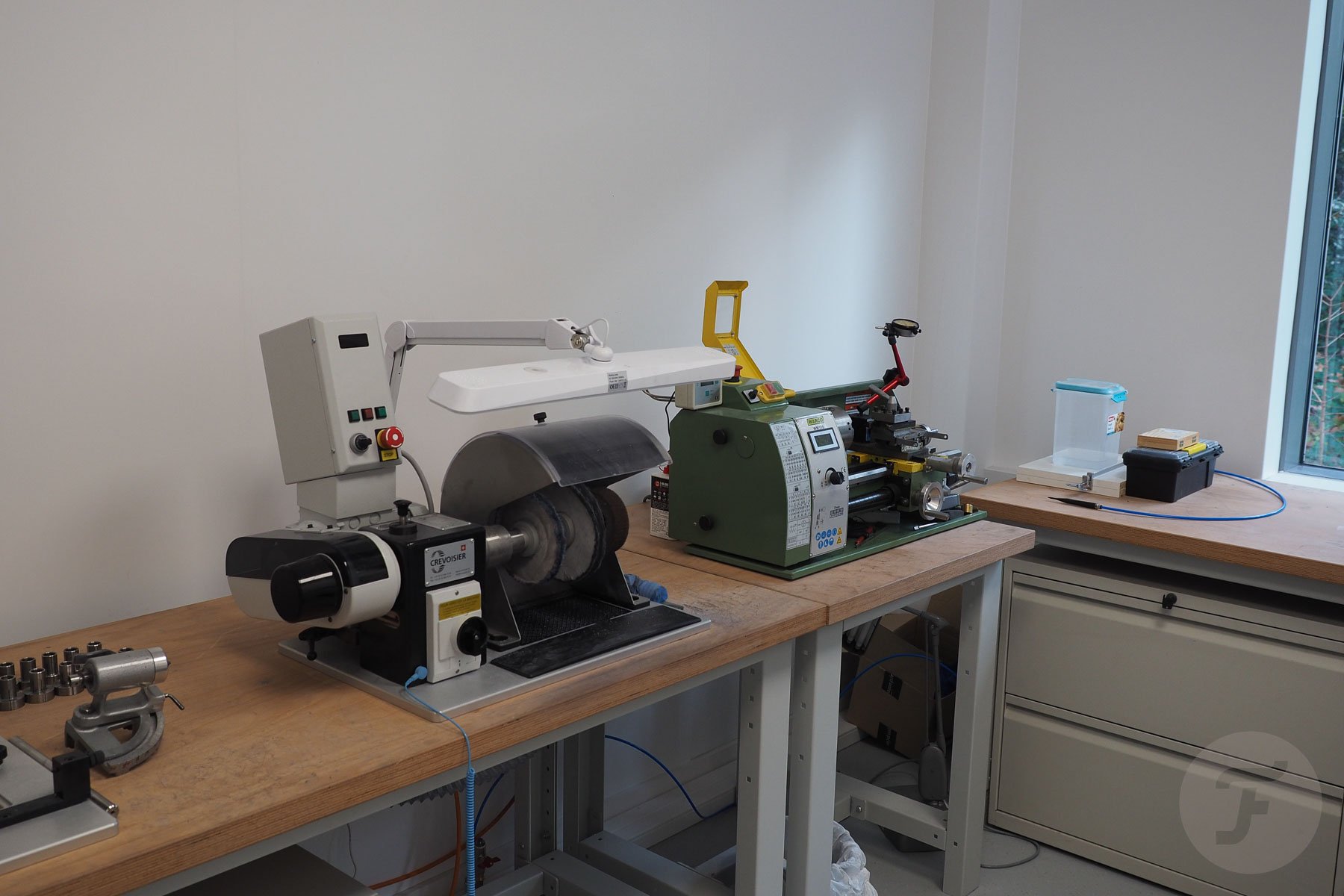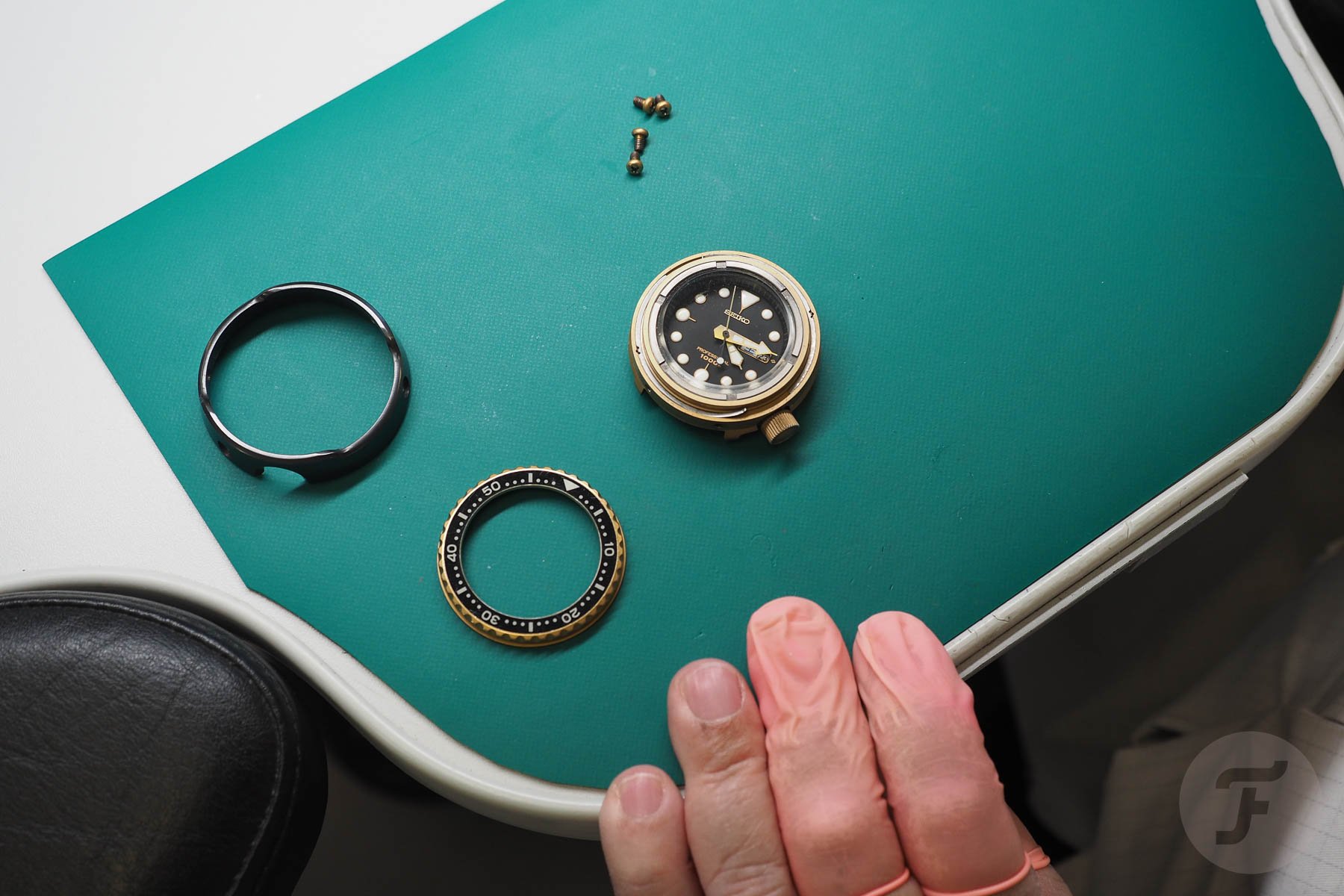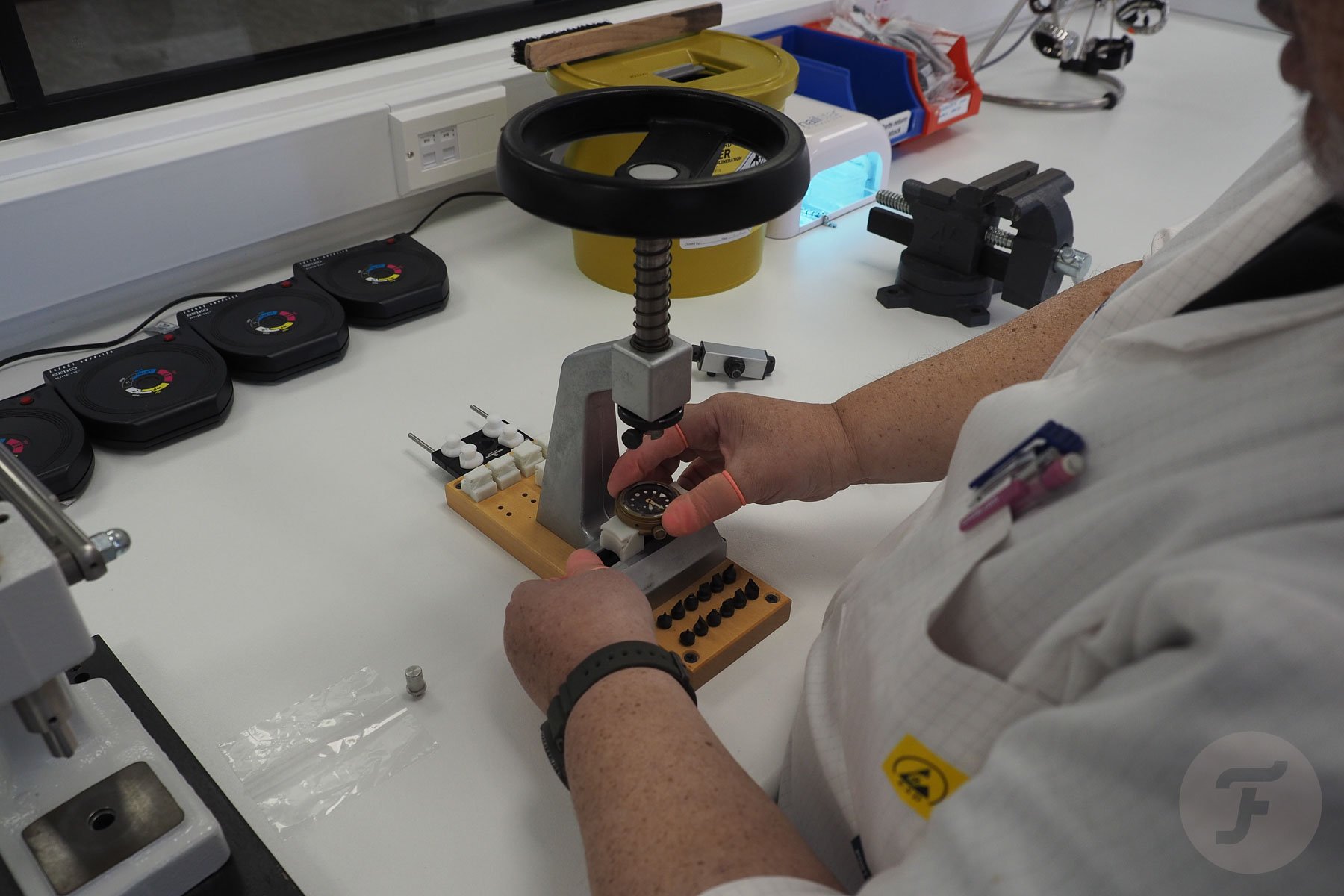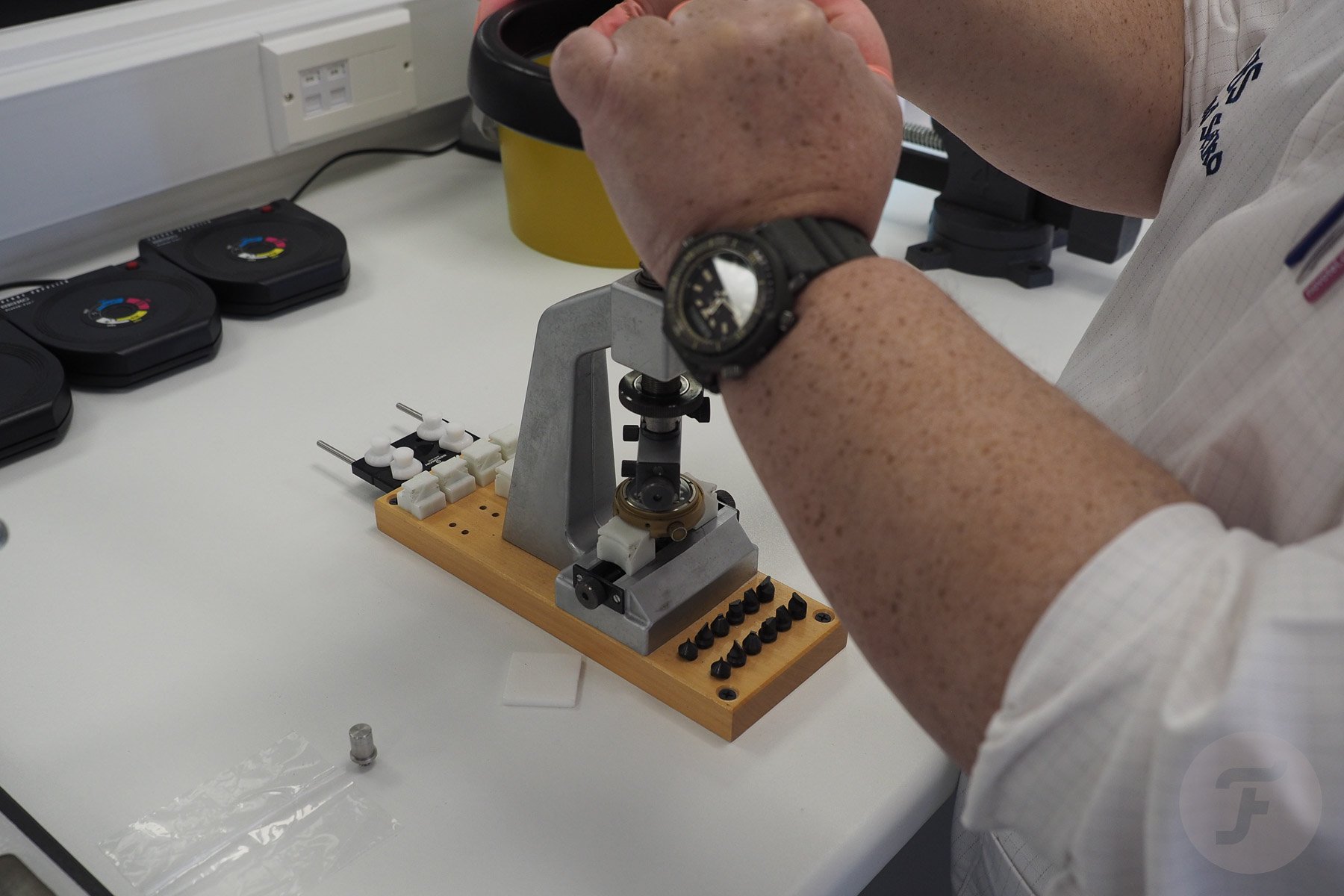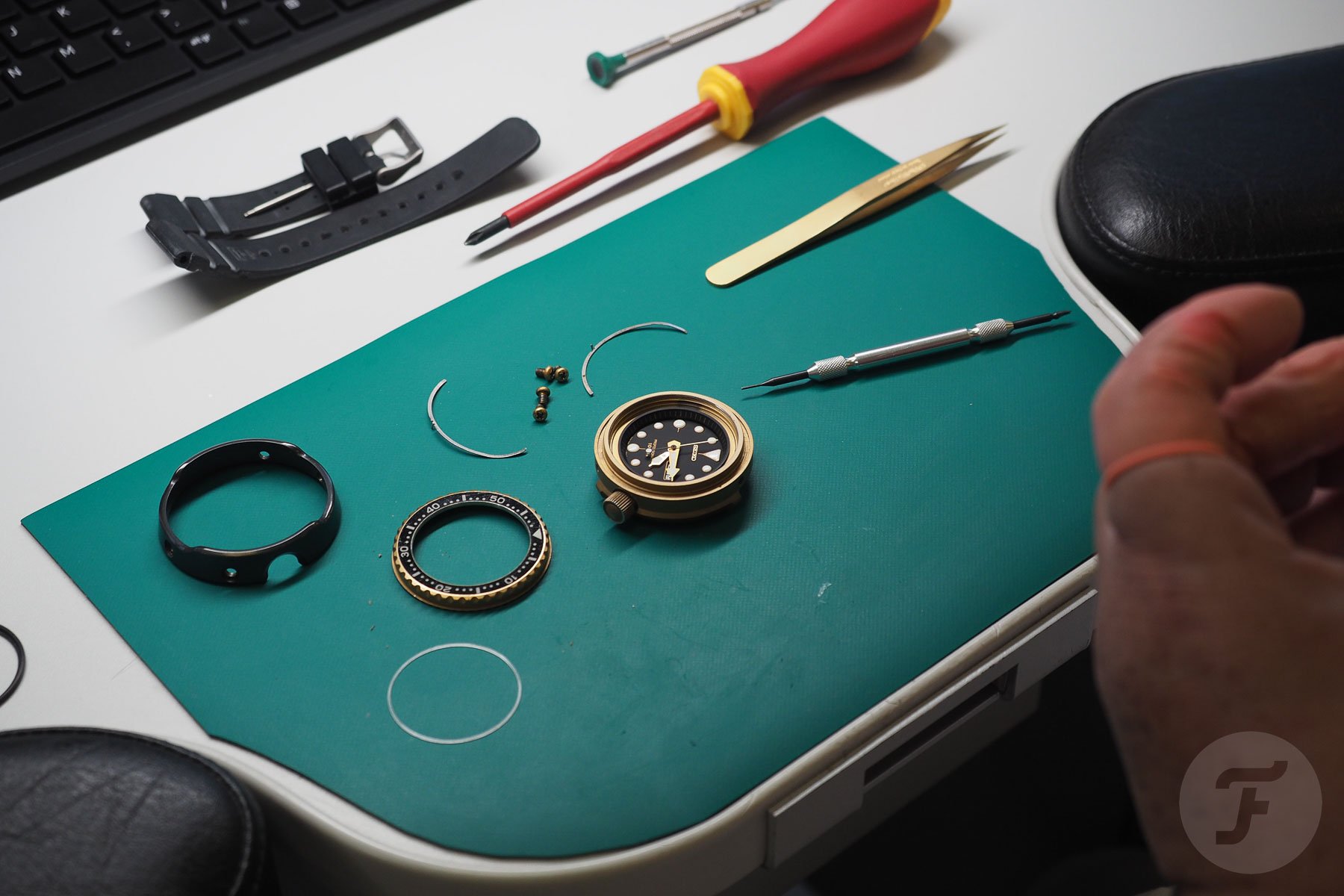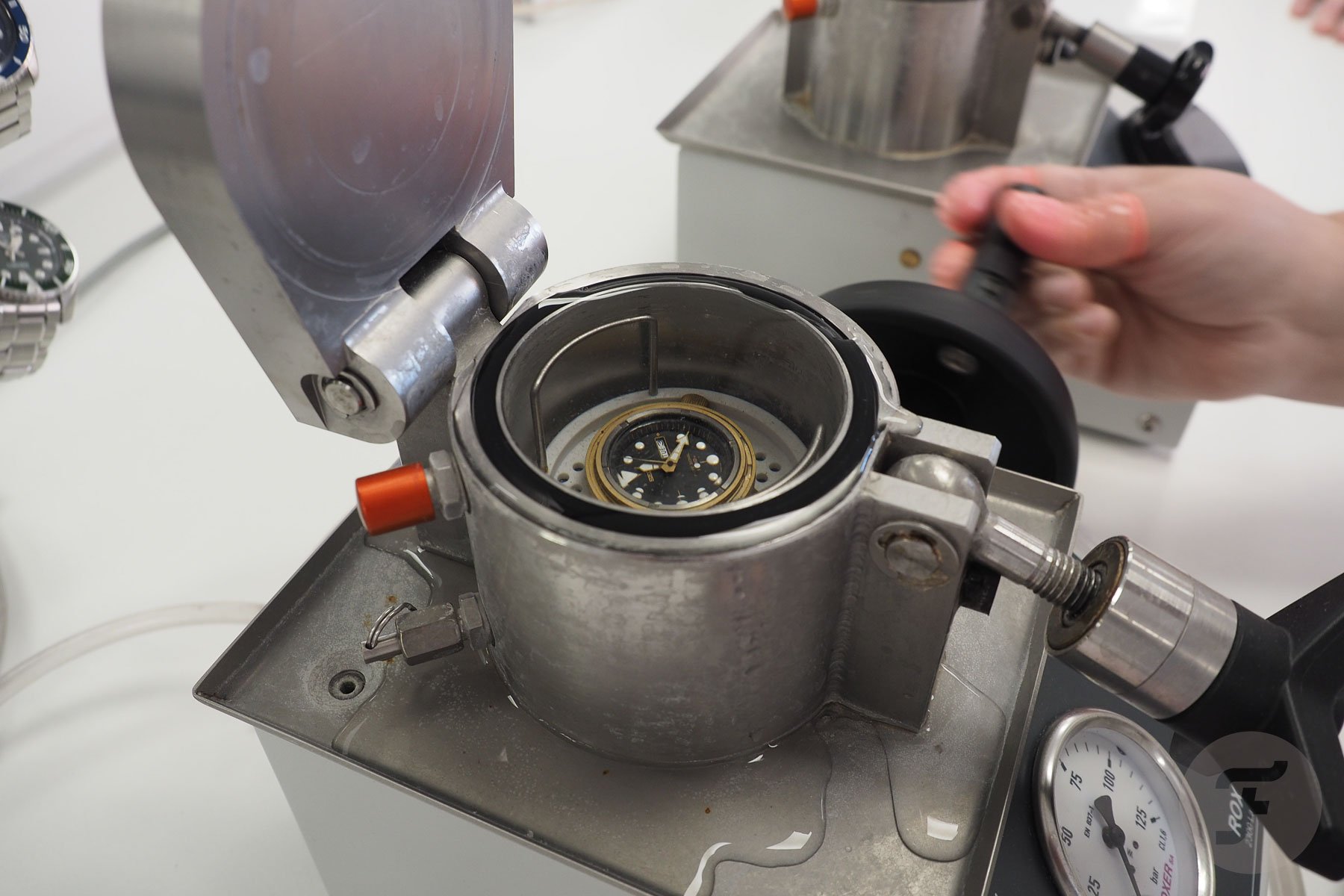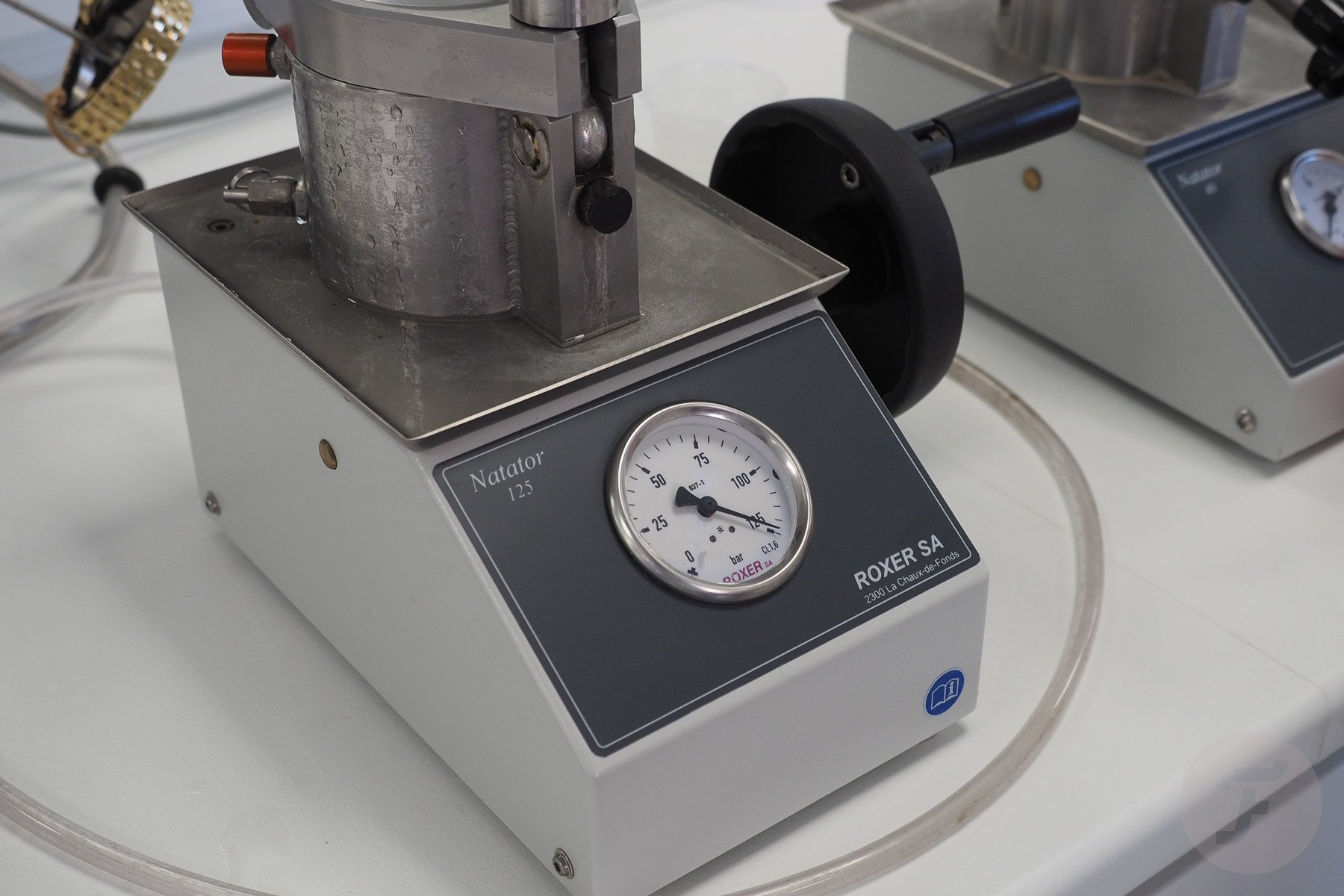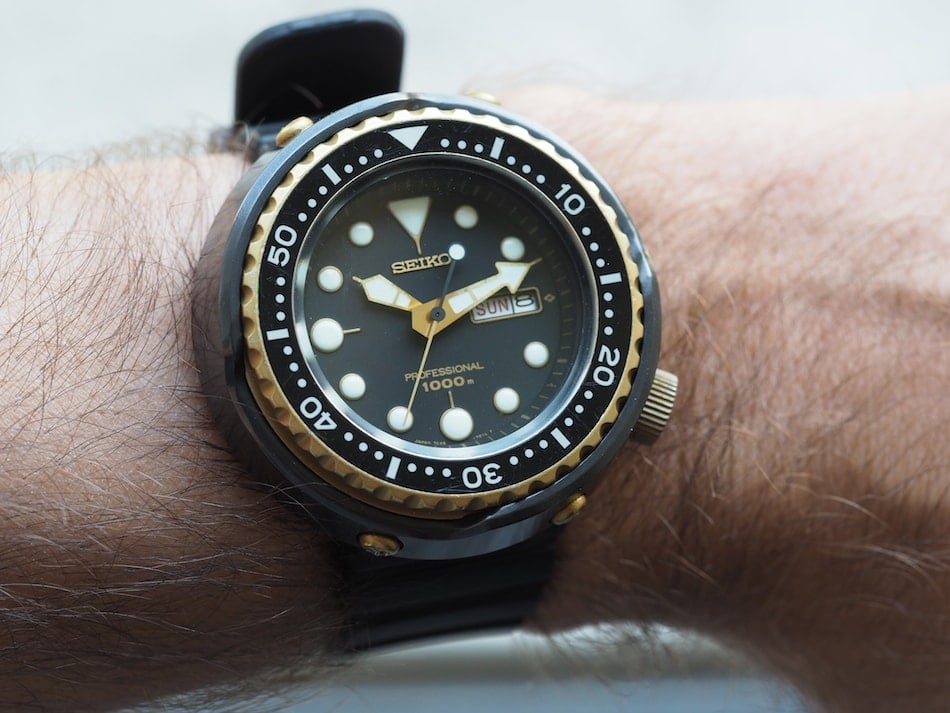Visiting Seiko UK And Witnessing A Seiko Tuna Battery Change
Last month, I had the opportunity to visit the Seiko UK headquarters in Maidenhead. As a die-hard Seiko fan, I’ve always wanted to see what happens here. Does the site outsource much work, or is this a fully functional service center? The answer may surprise you because Seiko UK can handle practically everything when servicing modern Seiko watches.
In October, I chatted with the Seiko UK team and asked about touring the headquarters. After all, we have many UK readers who also love Seiko. A couple of emails later, we decided on a date in early December. I rode the “Lizzie Line” down to Maidenhead where my friend Lawrence (@mostlymovado) picked me up at the station and then drove the final leg to Seiko UK. The modern building is within an office park and has been home to regional headquarters since early 2024. A big thanks to Linda, Rob, Robin, and Andre for their generous time while we toured the facility and watched a battery change on one of my historic Seiko Tuna divers.
What happens at Seiko UK?
The Seiko UK headquarters handles the region’s customer Seiko-related service, repairs, and service. Boutiques and individuals send watches in, and a team of watchmakers is on-site and ready to work on modern Seiko watches. We can get this out of the way because I asked about vintage pieces. As Seiko UK offers a warranty after service, vintage models are typically not accepted because official replacement parts no longer exist. It’s sad but hardly a surprise.
Starting the tour
However, there’s little that can’t be done on-site for modern Seiko watches. We started our day in a mock showroom used for training and testing out new displays. After a coffee and a bit of show-and-tell with some vintage pieces that I brought, it was time to begin. Lawrence and I donned white lab coats and entered the parts storage area. Large, anonymous steel cabinets house thousands of OEM Seiko parts. Interestingly, Rob, who gave us the tour, mentioned that what we saw represents a huge inventory reduction versus the old site.
Then, we entered a room where all of the watches were stored. This represents all the watches received and those ready to be shipped back to their owners. Here, we learned that Seiko UK replaces the movements on less expensive models instead of servicing them. For example, if a Seiko 5 were to come in for service, it would leave with a new automatic 4R36. Ultimately, it’s a matter of economics and time. However, if a watch like a Marinemaster 300 came in, it would receive a full service. Seiko UK can handle any watch with a modern kinetic, solar, Spring Drive, manual-wind, or automatic movement.
Cleaning and finishing
Rob explained that the new Seiko UK facility brings several improvements compared to the old building. First, natural light is abundant, which helps the watchmakers. Second, the watchmaking area is in a clean and quiet room. This means that case cleaning, polishing, and the all-important air compressor are in separate rooms. Regarding case polishing, the team can work on any metal and refinish cases to a high standard if the owner requests.
The watchmaking room
Entering the watchmaking area at Seiko UK was like walking into a spa. It was quiet, well lit, and clean. The watchmakers sit in a row and face large windows. Each has a large bench with lighting, instruments, and compressed air. We noticed quite a few Seiko-made machines, including accuracy testers. There were even some funky-looking Seiko-branded battery bins for recycling.
Watching a master in action
To make our visit more dynamic, the Seiko UK team kindly offered to change the battery of one of my vintage watches while we watched. I had never seen a disassembled Seiko Tuna, so I brought my newly dead 1,000m-rated 7C46 “Golden Tuna” model from 1990. I learned a few things that day about my watch. First, the watch had been relumed at some point. Second, the gasket parts from this watch are identical in size and fit to today’s Tuna. The 7C46 is also still in production, so movement changes are feasible. I decided to keep my original Hardlex crystal (new models use sapphire) and the original crown as new crowns are slightly different.
The watchmaker who worked on my Tuna was named Andre, and he informed us that he’s been with Seiko UK for 39 (!!) years. By the way, Rob, who gave us the tour and runs the service department, has been there for 40 years! That’s a strong endorsement of how the company treats its employees. I enjoyed chatting with Andre about older Seiko models during the battery change. His knowledge was encyclopedic, and I could feel the passion when he discussed some of the older movements he rarely sees now.
Taking apart a Seiko Tuna at Seiko UK
A battery change for the Golden Tuna costs £120 from Seiko UK. That feels reasonable because the watch has a monobloc case and requires more work than a normal quartz watch. However, I gained a new appreciation for the job after seeing the amount of seals in the watch and the testing after reassembly. Andre popped the bezel off and the click spring. He then removed the shroud screws and shroud.
As mentioned, a Seiko Tuna has a front-loading case. We walked over to a long countertop with various instruments, and Andre used a bench-mounted case-back-removal tool to unscrew the crystal. Years ago, he modified the tool inserts to fit the Tuna case. Everything opened up perfectly!
We got back to the bench, and the gaskets kept coming! It was my first time seeing the famous L-shaped black rubber gasket that made the Tuna famous. It also allowed Seiko to avoid the addition of a helium valve. Andre exposed the dial, removed the crown, and completed the disassembly. Then, he flipped the dial to reveal the battery.
Cleaning and reassembly
Andre deftly cleaned the crown threads and began replacing all the gaskets. The watch and gaskets still looked great, but the service includes these new parts. Soon enough, we were back at the counter, and Andre pressed the crystal into the L-shaped gasket and screwed everything together.
The big pressure test
Interestingly, the watch initially goes into a dry low-pressure tester. The 10-bar test indicates if something is grossly misaligned. The watch passed muster, so it was time for the high-pressure tester. Seiko UK tests watches to 125% of their stated rating, which surprised me. This 35-year-old Tuna has a 1,000m water resistance rating, which meant testing to 125 bar!
Andre placed the Tuna into a small chamber filled with water. Then, water was added to ensure no air was in the column. After that, he closed the chamber and increased the pressure by turning a wheel. Finally, the gauge reached 125 bar, and the needle held.
After this test, Andre put the shroud and bezel back on. The watch was finished and, honestly, it was a more extensive operation than I had imagined. It wasn’t a DIY job!
Thanks again to Seiko UK
Lawrence and I left Seiko UK feeling that this team could manage everything on-site. Watches don’t go back and forth to Japan. Plus, we were amazed by the tenure of the employees and how knowledgeable they are about the brand and its history. As a longtime fan of the Japanese brand, I now feel even more confident that there’s a highly competent local facility to keep our watches running for years to come.

